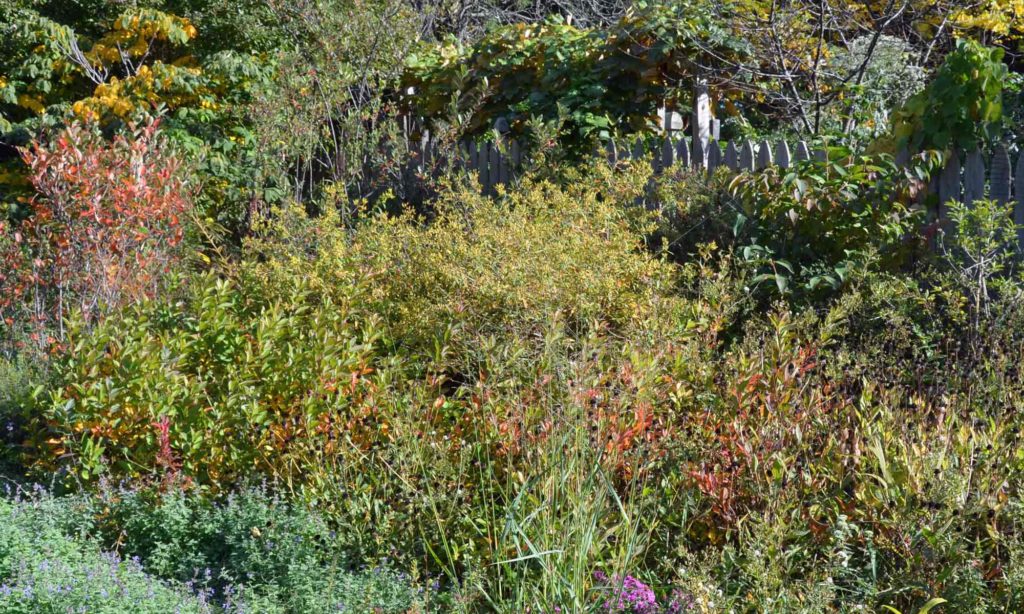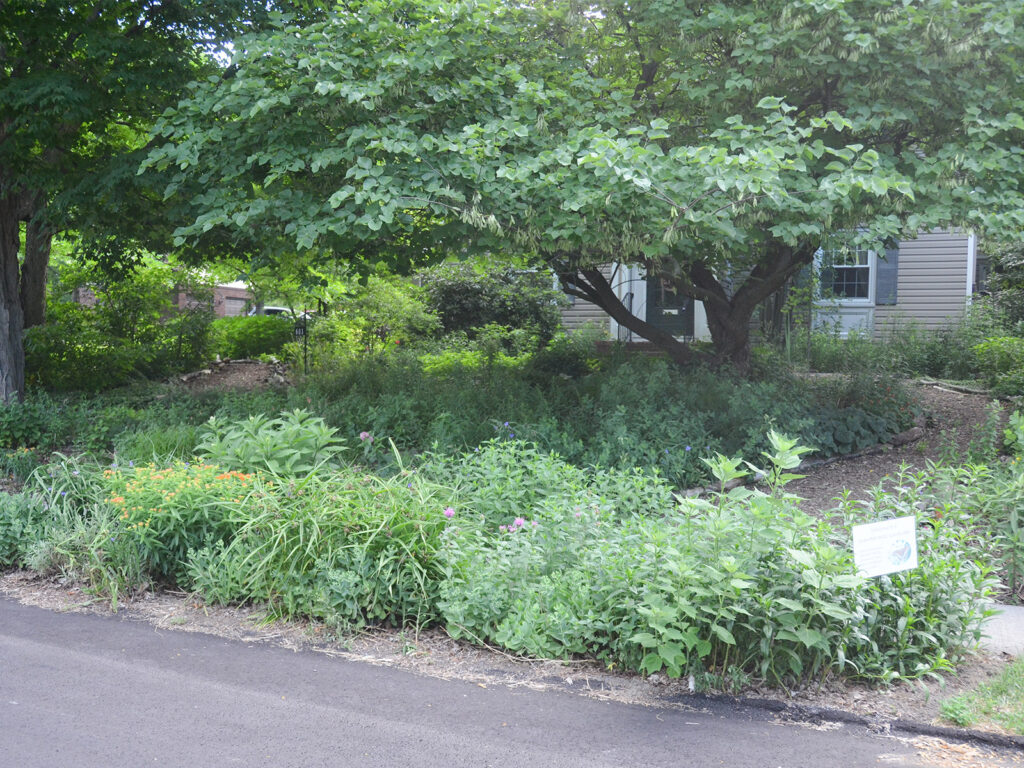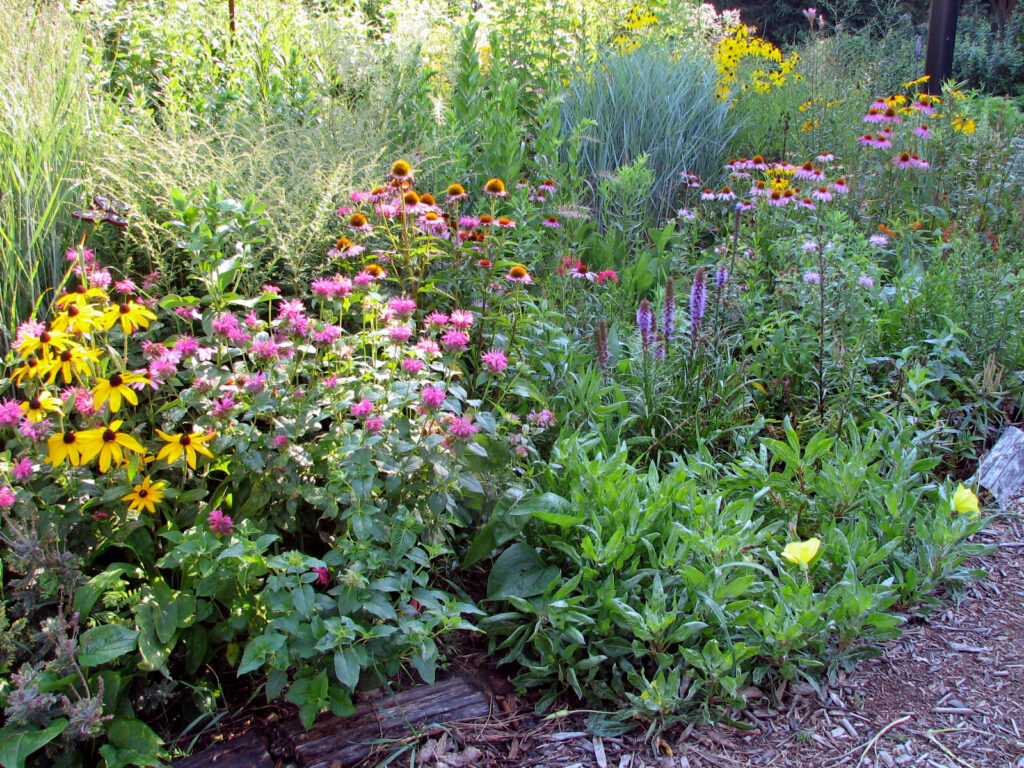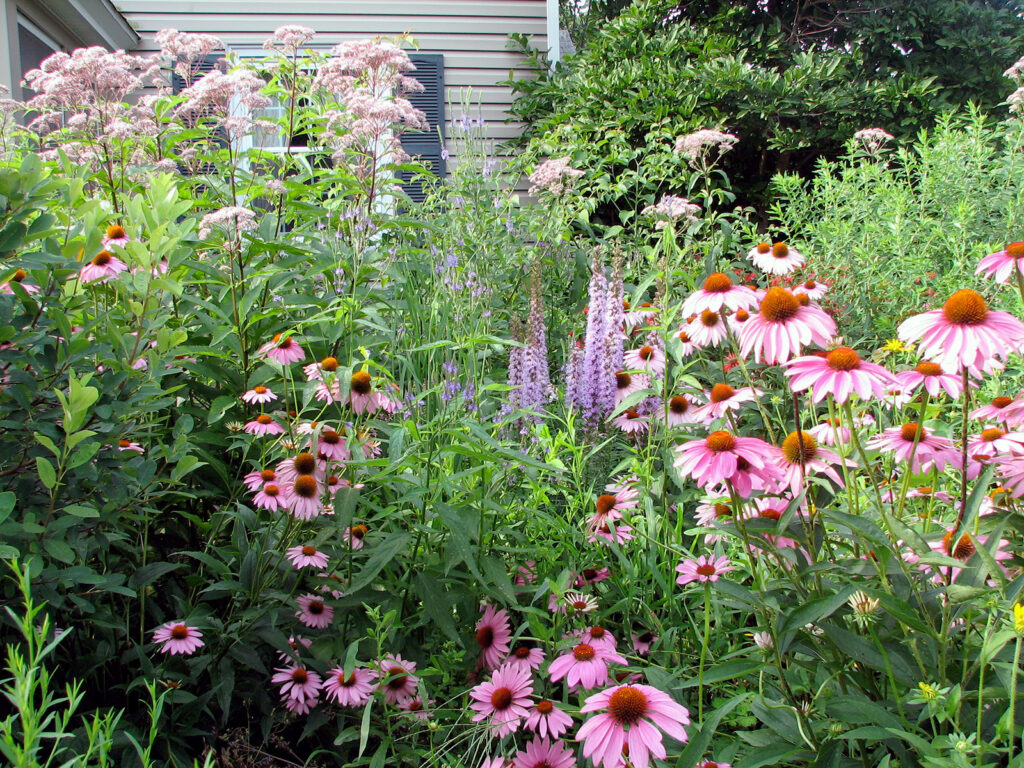
This is the habitat hedgerow in summer.
Until early July, there are blossoms here and there throughout the yard and especially spring ephemerals that have already gone by. It doesn’t really take off in mid-July. This view of the front yard (below) shows a few flowers, but there are lots of buds ready to burst. Despite the temporary lack of flowers people see, though, this area is providing a lot of habitat now and throughout the year.


This meadow-like area has a lot of grasses and wildflowers and really shines in summer. The nectar attracts many butterflies and bees. We enjoy watching the activity as we eat our meals out in the back yard.
Some of the flowers seen in this view, roughly from left to right, are:
- Brown-eyed susans (Rudbeckia hirta) – It’s nice to have some of these, though they’re overused, they spread a lot, and I don’t especially like the golden color. I compost a lot of these to try to keep it under control.
- Wild bergamot (Monarda fistulosa), a favorite of clear-wing sphinx moths (sometimes called hummingbird moths) – I like these especially because they’re such a good nectar plant
- Coneflowers (Echinacea purpurea) – so easy to grow, and they provide both nectar and seeds for birds (when not dead-headed)
- Gayfeather (Liatris spicata) – another great easy-to-grow nectar plant
- Switchgrass (Panicum virgatum) (the bluish-green patch of grass) – one of many cultivars available.
- Gray-headed coneflower (Ratibida pinnata) (the patch of yellow at the top right) – I especially love the leaves on this plant.

I planted some of each of these plants, but have just let them grow and reseed.
So … I also pull extras out frequently. These are all great nectar plants.
One plant in the photo that isn’t as widely known is the candelabra-looking plant with small blue flowers: vervain (Verbena hastata). Pollinators love this plant!
Reflections
If it were of any use, every day the gardener would fall on his knees and pray somehow like this:
“O Lord, grant that in some way it may rain every day, say from about midnight until three o’clock in the morning, but, you see, it must be gentle and warm so that it can soak in; grant that at the same time it would not rain on campion, alyssum, helianthus, lavender, and others which you in your infinite wisdom know are drought-loving plants — I will write their names on a bit of paper if you like — and grant that the sun may shine the whole day long, but not everywhere (not, for instance, on the gentian, plantain lily, and rhododendron), and not too much; that there may be plenty of dew and little wind, enough worms, no plant-lice and snails, no mildew, and that once a week thin liquid manure and guano may fall from heaven. Amen.”
~ Carel Capek, The Gardener’s Year, 1929 pp. 58-9
